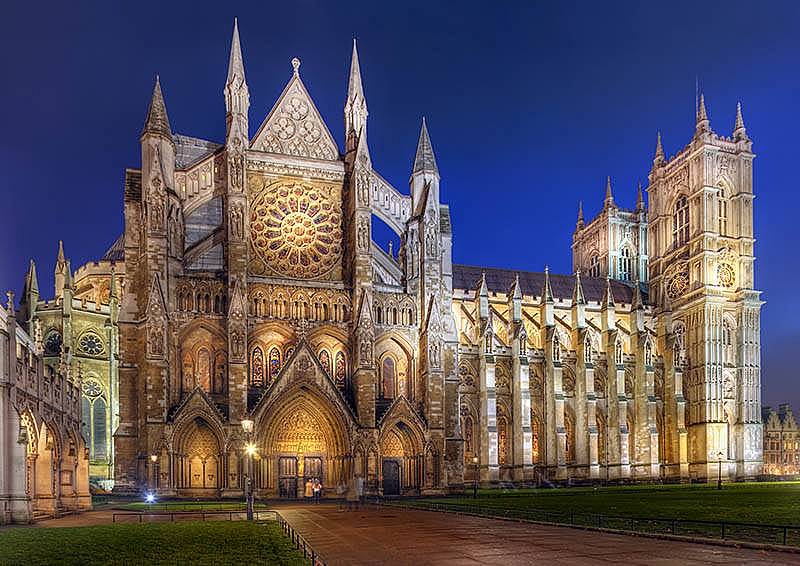Westminster 10 is not just a phrase; it encapsulates a rich tapestry of history, politics, and culture that has shaped the very fabric of the United Kingdom. Located in the heart of London, Westminster has long been synonymous with governance and power. In this article, we will delve deep into what Westminster 10 means, its historical significance, its current relevance, and how it affects the daily lives of citizens and the global community alike. With a focus on expertise, authority, and trustworthiness, this guide aims to provide a nuanced understanding of this pivotal area.
The notion of Westminster as a political hub is often associated with the Houses of Parliament, where laws are made, and decisions are taken that impact millions. However, Westminster 10 specifically refers to a variety of aspects, including its geographical location, political implications, and cultural heritage. By the end of this article, you will have a well-rounded viewpoint on Westminster 10 and its multifaceted importance.
As we explore the various dimensions of Westminster 10, we will take a closer look at its history, notable landmarks, political significance, and its role in contemporary society. This comprehensive exploration will not only enhance your understanding but also illustrate why Westminster remains a focal point for discussions related to governance and democracy.
Table of Contents
History of Westminster
The history of Westminster can be traced back to the early medieval period when it served as a religious and political center. The area saw significant development in the 11th century with the establishment of Westminster Abbey, a remarkable architectural feat that has stood the test of time.
Over the centuries, Westminster has witnessed numerous pivotal moments in British history, from the signing of the Magna Carta to the establishment of parliamentary democracy. The significance of Westminster as a political hub was solidified with the construction of the Palace of Westminster, which became the meeting place for the House of Commons and the House of Lords.
Key Historical Events
- 1066: The construction of Westminster Abbey begins.
- 1215: The signing of the Magna Carta, a foundational moment for modern democracy.
- 1707: The Act of Union establishes the Parliament of Great Britain.
- 1834: The original Palace of Westminster is destroyed by fire, leading to its reconstruction.
Notable Landmarks in Westminster 10
Westminster 10 is home to several iconic landmarks that attract millions of visitors each year. These landmarks not only represent the architectural grandeur of the area but also serve as symbols of British history and culture.
Top Landmarks
- Westminster Abbey: A UNESCO World Heritage site, this abbey has hosted many royal ceremonies.
- The Houses of Parliament: Known for its stunning Gothic architecture, it is the seat of the UK Parliament.
- Big Ben: The clock tower, often used as a symbol of London itself.
- St. Margaret's Church: A beautiful church adjacent to Westminster Abbey, known for its historical significance.
Political Significance of Westminster 10
Westminster 10 is synonymous with governance in the UK. As the political heart of the country, it hosts debates, legislation, and discussions that shape national policies.
The role of Westminster in British politics cannot be overstated. It is here that Members of Parliament (MPs) represent their constituents, voice their opinions, and influence legislation that affects daily life. The political landscape is always evolving, with Westminster serving as the focal point for major political events.
Key Political Institutions
- The House of Commons: The lower house of Parliament, consisting of elected MPs.
- The House of Lords: The upper house, which includes appointed members and bishops.
- The Prime Minister’s Office: The official residence and office of the Prime Minister.
Cultural Heritage of Westminster 10
Beyond politics, Westminster 10 also plays a crucial role in the cultural landscape of London. The area is rich in traditions, arts, and social movements that have emerged over the years.
Cultural institutions such as theaters, museums, and galleries contribute to the vibrant cultural scene. Events such as the Notting Hill Carnival and the annual Lord Mayor's Show highlight the diversity and cultural richness of Westminster.
Influential Cultural Institutions
- The National Gallery: Houses a rich collection of Western European paintings.
- The Tate Britain: Focuses on British art from 1500 to the present.
- The Royal Opera House: A leading venue for opera and ballet.
Educational Institutions in Westminster
Westminster 10 is also home to some of the UK's most prestigious educational institutions. These schools and universities contribute significantly to the academic landscape of the country.
Notable institutions include:
Top Educational Institutions
- Westminster School: One of the oldest schools in the UK, known for its academic excellence.
- University of Westminster: Offers a wide range of undergraduate and postgraduate courses.
- Royal College of Art: A renowned postgraduate art and design university.
The Economy of Westminster 10
The economy of Westminster 10 is robust, driven primarily by its status as a political and cultural hub. The area attracts a significant number of tourists, which boosts the local economy.
Moreover, Westminster is home to numerous businesses, ranging from small enterprises to large corporations, contributing to its economic diversity.
Economic Highlights
- High tourism revenue from landmarks and cultural institutions.
- A concentration of financial services and corporate offices.
- Strong job market, particularly in public administration and education.
Current Events and Westminster 10
As of 2023, Westminster continues to be at the forefront of political discussions, especially in light of recent events such as Brexit and the ongoing debates surrounding climate change and social justice.
These issues are not only relevant to the UK but also have global implications, making Westminster a key player on the international stage.
Conclusion
In conclusion, Westminster 10 represents a unique intersection of history, politics, culture, and education. Its significance extends beyond the borders of the UK, influencing global discussions and policies. Understanding Westminster 10 is crucial for anyone interested in the workings of democracy and the rich history that informs it.
We encourage you to share your thoughts on Westminster 10 and its impact in the comments below. If you found this article informative, please consider sharing it with others or exploring more articles on our site.
Final Thoughts
Thank you for taking the time to explore Westminster 10 with us. We hope to see you again soon for more insightful articles that delve into the complexities of our world.
Article Recommendations



ncG1vNJzZmilqZu8rbXAZ5qopV%2BcrrOwxKdvaK%2BVqMGutc2sq56qXWZ9b7TTpqM%3D